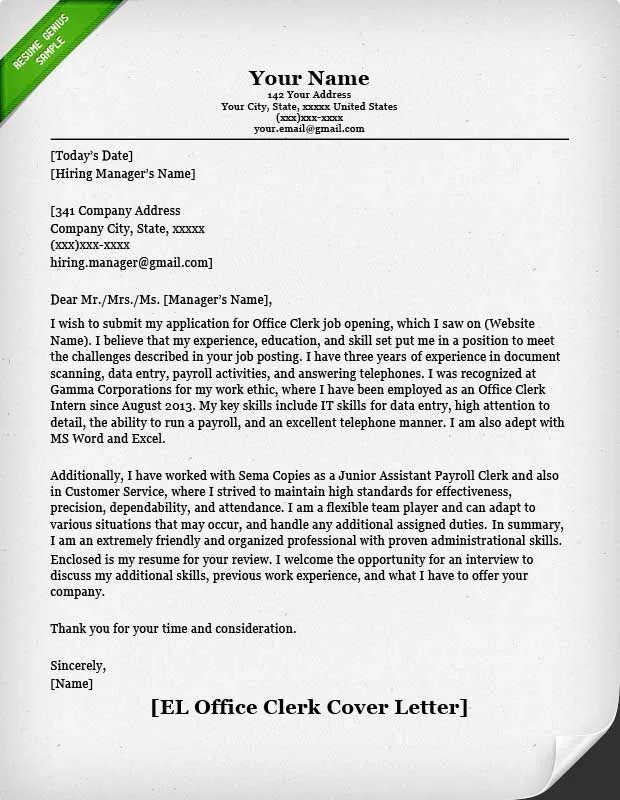Key Elements of a Data Entry Clerk Cover Letter
A well-crafted cover letter is your first opportunity to make a positive impression on a potential employer. For a data entry clerk position, your cover letter should not only showcase your skills and experience but also demonstrate your understanding of the role’s requirements. This guide will delve into the essential components of a compelling cover letter, providing you with the knowledge and tools needed to stand out from the competition. From formatting your contact information to highlighting your attention to detail, we’ll cover everything you need to create a cover letter that gets noticed and gets you an interview. Remember, your cover letter is a marketing document that sells your abilities, so let’s make sure it’s a bestseller!
Contact Information & Salutation
The first impression matters, and your contact information sets the stage. Ensure your letter includes your full name, address, phone number, and professional email address. Accuracy is key here, as any errors could prevent the employer from reaching you. Following your contact details, the salutation is your formal greeting. This should be tailored to the specific person if possible; otherwise, a general salutation is acceptable. Let’s look at how to make this initial section a success.
Formatting Your Contact Details

Your contact details should be presented in a clean and organized manner, typically at the top of the letter. Use a clear, readable font, and ensure the information is easy to locate. Avoid using overly creative formatting that could distract from the content of your letter. The goal is to provide the employer with the necessary information to contact you quickly and easily. Consider a layout with your name and contact information left-aligned or centered at the top. Consistent formatting throughout the cover letter shows professionalism and attention to detail (Image: cover-letter-formatting.webp).
Proper Salutation Techniques
The salutation should be professional and appropriate for the context. If you know the hiring manager’s name, use ‘Dear Mr./Ms./Mx. [Last Name]’. If you don’t know the name, opt for a general salutation like ‘Dear Hiring Manager’ or ‘Dear [Company Name] Team’. Avoid informal greetings like ‘Hello’ or ‘Hi’, and always ensure your salutation aligns with the company’s culture. This sets the tone for the rest of your letter and shows you’ve taken the time to personalize your application. Ensure you spell the name correctly; a simple search can help you find the correct name and title.
Highlighting Your Skills & Experience
This is the core of your cover letter where you showcase your abilities and relevant experience. Focus on skills directly related to data entry, such as accuracy, speed, and attention to detail. Provide specific examples of how you have demonstrated these skills in previous roles. Quantify your achievements whenever possible; numbers speak volumes and give employers a clear understanding of your capabilities. Use action verbs to describe your responsibilities and accomplishments, painting a vivid picture of your work ethic and expertise.
Showcasing Data Entry Skills
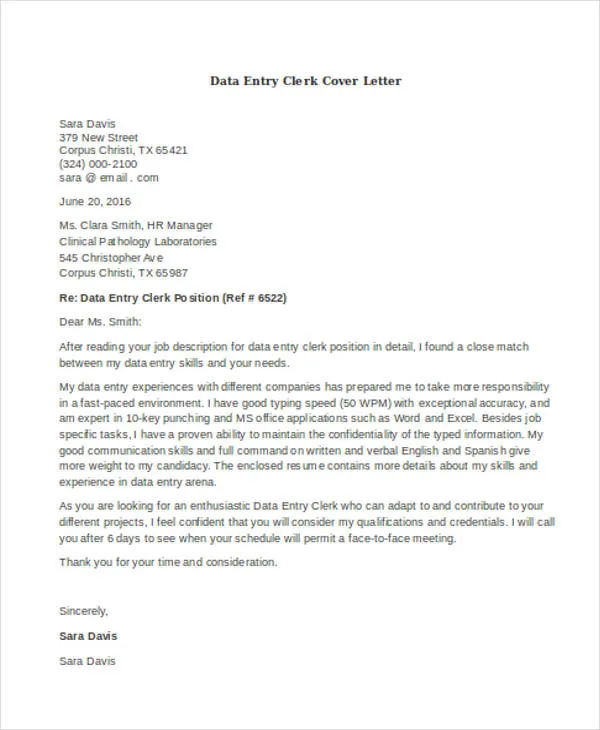
Data entry skills encompass much more than just typing; they involve accuracy, speed, and a keen eye for detail. In your cover letter, explicitly mention your proficiency in these areas. Use keywords from the job description to tailor your response, such as ‘accurate data input,’ ‘fast typing speed,’ or ’experience with data validation.’ If you’re familiar with specific data entry software or databases (e.g., Microsoft Excel, Salesforce, or specialized industry tools), make sure to highlight this. This demonstrates to the employer that you possess the fundamental qualities needed to be successful in the role. (Image: data-entry-skills.webp).
Quantifying Achievements in Previous Roles
Numbers and data make your accomplishments more concrete and impactful. Instead of just saying you ‘managed data,’ say you ‘processed an average of 500 data entries per day with 99% accuracy.’ If you improved efficiency, note the percentage or time saved. Quantify your speed; mention your words per minute (WPM) and any specific typing tests you have taken. Provide metrics to illustrate the value you brought to previous employers. This data gives potential employers a clearer picture of your potential contributions. (Image: quantifying-achievements.webp)
Demonstrating Attention to Detail
Attention to detail is critical for data entry clerks. Your cover letter should subtly demonstrate this. Review your letter multiple times for grammatical errors, typos, and formatting inconsistencies. Show how you maintained accuracy in previous roles by implementing specific procedures. The way you present your application conveys as much about your skills as the content itself. Proofreading is essential; a cover letter free of errors proves you understand the importance of precision, and a lack of errors shows you possess the skill the job demands.
Examples of Highlighting Accuracy
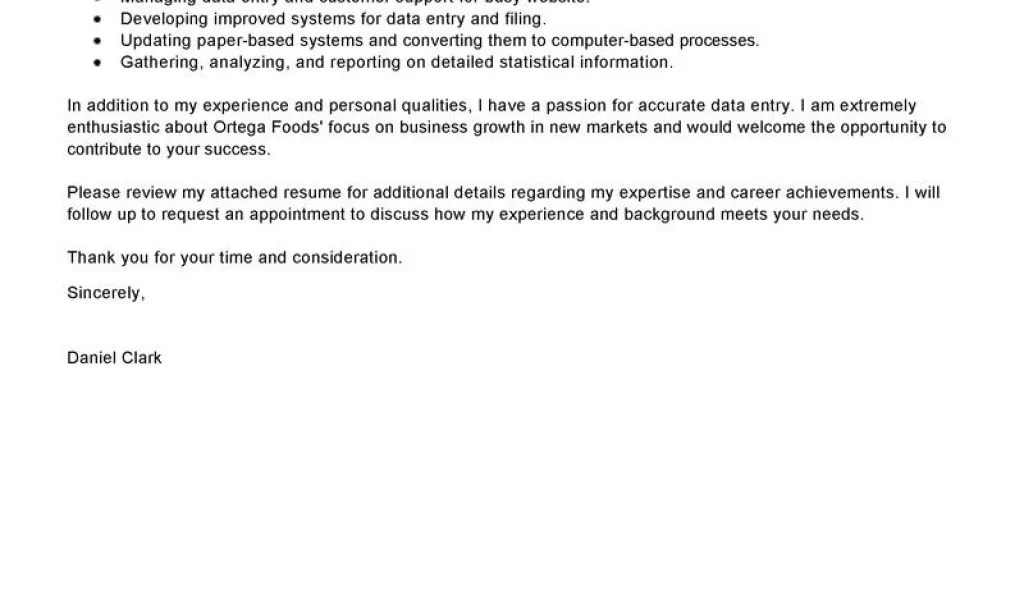
When highlighting your accuracy, provide examples from your past experiences. Instead of simply stating you are ‘accurate,’ describe specific situations. For instance, you could say ‘Consistently maintained a 99% accuracy rate while inputting customer data, reducing errors and improving data integrity.’ Or, ‘Implemented quality control checks that decreased data entry errors by 15% within the first quarter.’ Specific examples reinforce your claims and provide proof of your attention to detail. Use any quality assurance processes that you are familiar with.
Illustrating Time Management and Organization
Data entry often involves managing multiple tasks and deadlines. Show your ability to manage your time effectively. You could state ‘Successfully met daily and weekly deadlines while managing multiple data entry projects simultaneously.’ If you used organizational systems or tools, such as spreadsheets or project management software, include that information. Being organized and efficient reflects your ability to stay focused, avoid errors, and ensure work is completed on time. These skills are important for the data entry clerk position.
Expressing Enthusiasm & Company Alignment
Your cover letter should convey your enthusiasm for the position and the company. Show that you have researched the company, understand its mission, and are genuinely interested in contributing to its goals. This helps you stand out and demonstrates that you’re motivated and aligned with the company’s values. Showing your enthusiasm and making it apparent that you’ve done your research can turn you into the ideal candidate.
Researching the Company’s Values
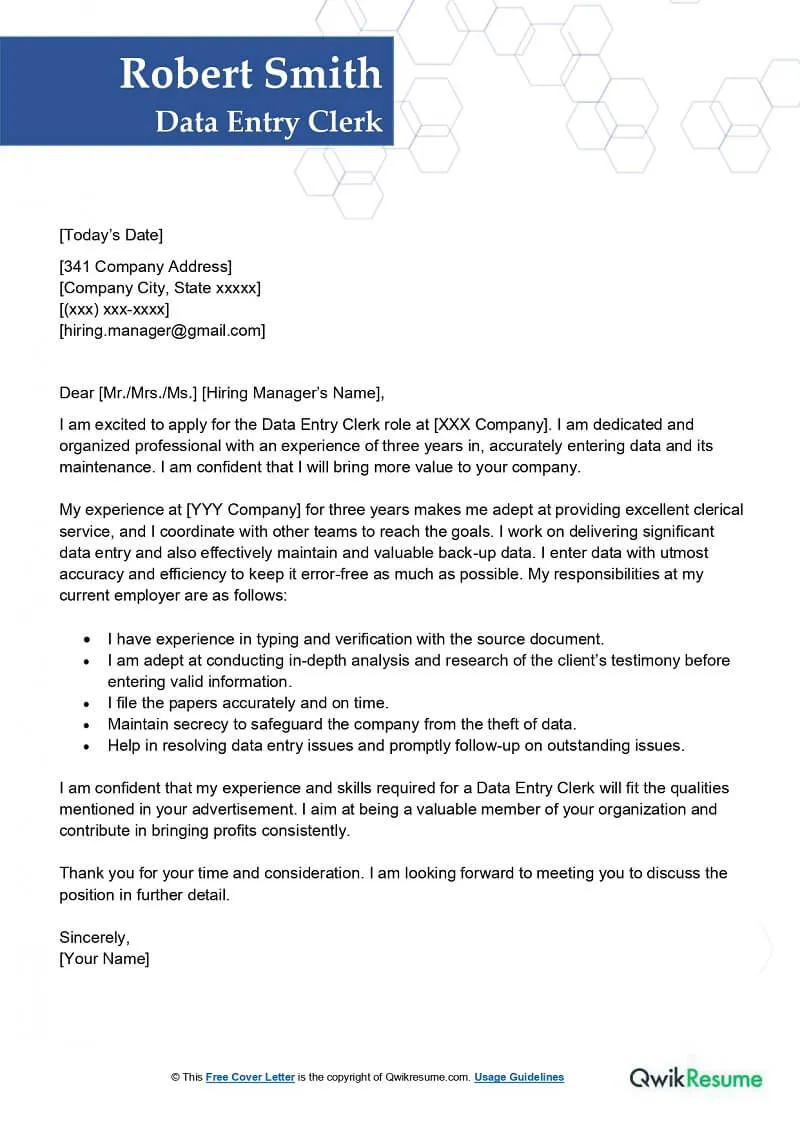
Before writing your cover letter, research the company’s mission, values, and recent activities. This information can be found on their website, social media profiles, or through industry news. Use this knowledge to tailor your letter and demonstrate that you are a good fit for their culture. For example, if the company emphasizes teamwork, mention how you have collaborated effectively with others in the past. If they focus on customer satisfaction, highlight your experience in providing accurate and reliable data that supports customer service efforts. (Image: company-research.webp)
Demonstrating a Genuine Interest
Beyond mentioning the company’s values, express your genuine interest in the specific data entry clerk position. Highlight why this particular role appeals to you. For example, you could say, ‘I am particularly drawn to [Company Name]’s commitment to accuracy and its dedication to delivering high-quality services.’ Mention the specific responsibilities or aspects of the role that interest you, and show how your skills align with those requirements. This demonstrates that you are enthusiastic about the opportunity and have carefully considered what the role entails. Use any company knowledge to connect your skills with their goals (Image: data-entry-cover-letter-tips.webp).
Call to Action & Closing
The closing of your cover letter should include a clear call to action, encouraging the employer to contact you. Thank the hiring manager for their time and consideration. This reinforces your professionalism and shows your eagerness for the position. A well-written closing can make all the difference in securing an interview.
Strong Closing Statements
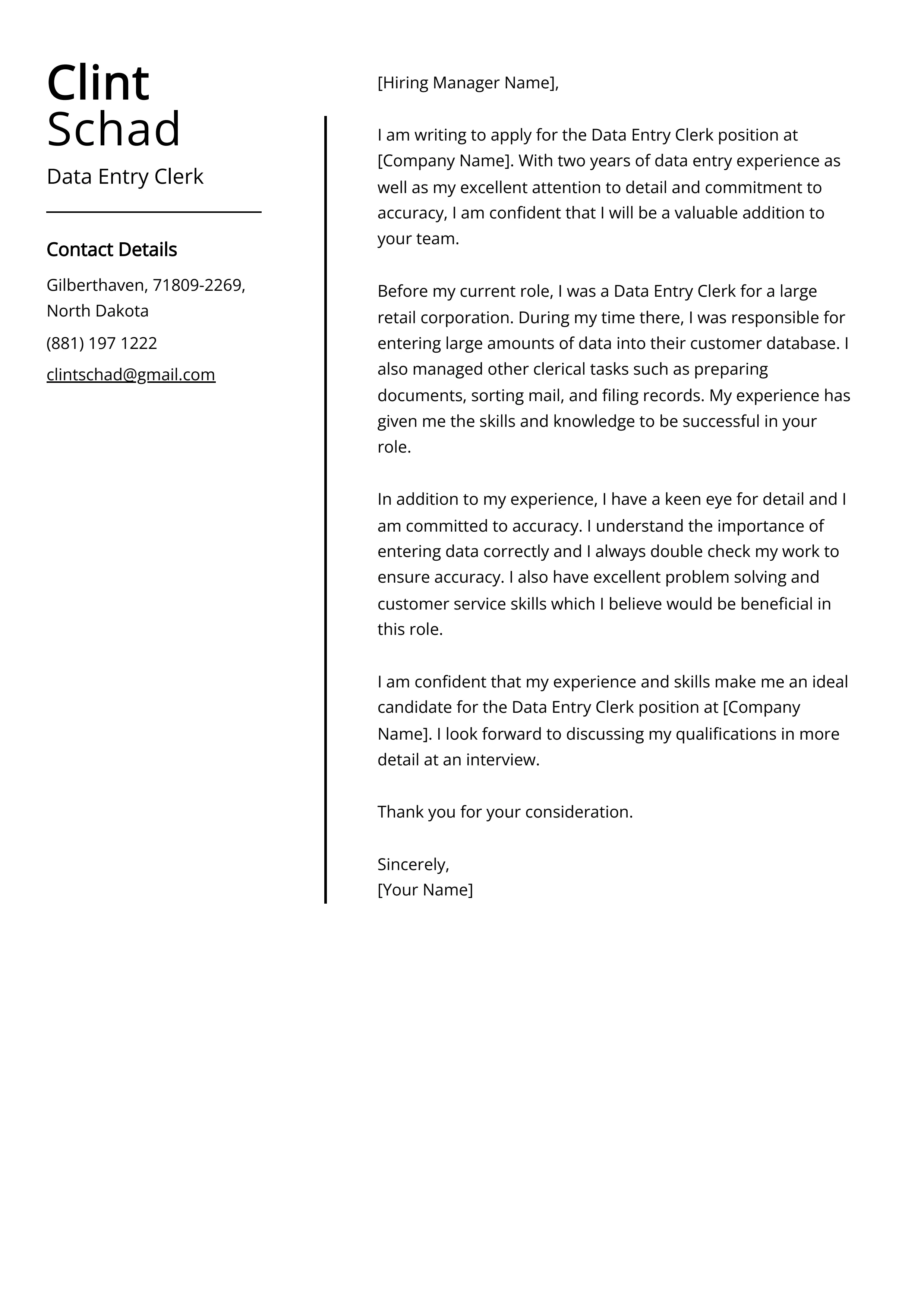
End your cover letter with a strong and confident closing statement. Include a call to action such as ‘I am eager to discuss how my skills and experience can contribute to your team, and I am available for an interview at your earliest convenience.’ or ‘Thank you for your time and consideration. I look forward to the opportunity to speak with you further about this exciting opportunity.’ This clearly indicates your interest in the position and prompts the employer to take the next step. Keep your closing concise and professional. (Image: closing-cover-letter.webp)
Properly Formatting Your Signature
Your signature should be the final element of your cover letter. If you are sending an electronic version, use a typed signature, followed by your full name. If you are printing the letter and sending a hard copy, sign your name above the typed version. This shows professionalism and completeness. Make sure that your name is clearly readable, and use a professional font. Ensure that the closing and signature reflect your attention to detail.
